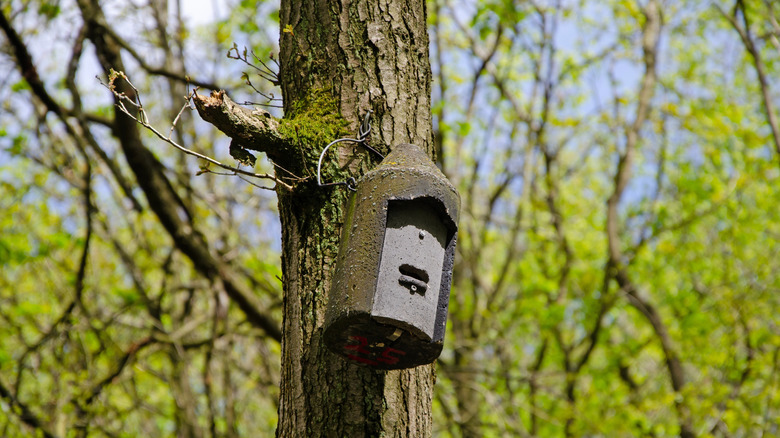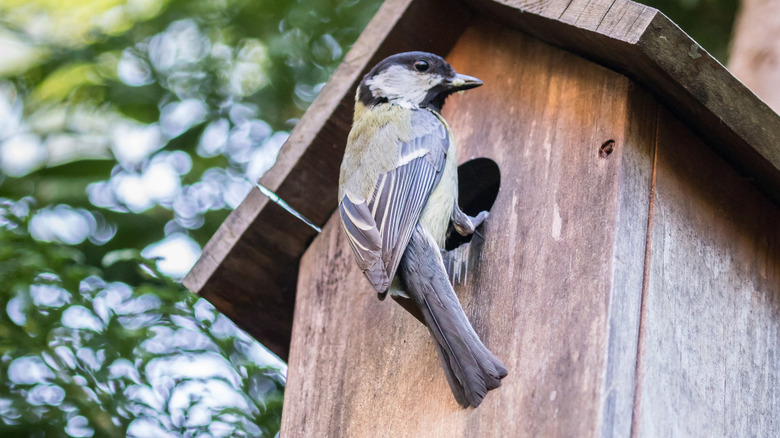Should You Take Roosting Boxes Down In The Summer? Here's What We Know
Not all of our feathered friends depart for warmer climes when summer ends. Installing a roosting box is a great way to keep birds visiting your yard during winter. It'll keep them warm and toasty (provided it's well insulated) and you may even get to enjoy some fun bird watching opportunities. But once spring arrives, you might wonder: should you take your roosting box down? Here's an idea: don't take it down — adapt it. With a few small changes, your winter roosting box can become a nesting box for the warmer months. Many cavity-nesting birds will happily move in if the box suits their needs. It's a smart, low-effort way to support your local bird population while making the most of one simple backyard setup.
That said, if your roosting box is specifically designed as a winter hideaway (think: small entrance, no ventilation, built-in perches), storing it during summer could extend its lifespan and help you avoid cleaning and maintaining it. But if it's easily adaptable and you're open to letting birds use it for nesting, leaving it up year-round makes sense. It's also worth noting that roosting boxes, nesting boxes, and bird houses aren't the same thing. Roosting boxes are built to help birds stay warm in winter. Nesting boxes support breeding in spring and summer. And bird houses? They're usually more decorative than functional. With a little effort, though, your roosting box can potentially serve nesting needs as well.
One box, two uses — how to make your roosting box work all year
To ready your roosting box for the breeding season, start by making it more nest-friendly. Open up any plugged ventilation holes to prevent overheating, and if there's an interior perch (which roosting birds like for huddling), remove it — nesting birds prefer open space. Some boxes have removable fronts, so it's simply a matter of flipping it upside down so the entrance sits closer to the top. Before the shift in seasons, give the box a thorough clean to make it appealing to soon-to-be parents scouting for the perfect nesting spot. With birds spending so much time inside during winter, things can get pretty grimy — even if you've been cleaning it regularly. A quick rinse with a diluted bleach solution (one part bleach to 10 parts water) followed by a full air-dry will do the trick.
Depending on where your roosting box is, you may need to relocate it for nesting purposes. Both types need to be high enough to avoid predators, but placement priorities differ. Roosting boxes work best in sunny, wind-sheltered areas, while nesting boxes need to be safe from the summer heat since eggs and chicks fare better in cooler, shaded spots.
If you'd rather store the box, wait until winter is fully over so you don't leave anyone out in the cold, then clean and stash it in a dry place. But leaving it up means birds may still use it for shelter during summer storms or as a nighttime roost. Either way, you're helping backyard birds thrive all year long — and that's a win for everyone.

